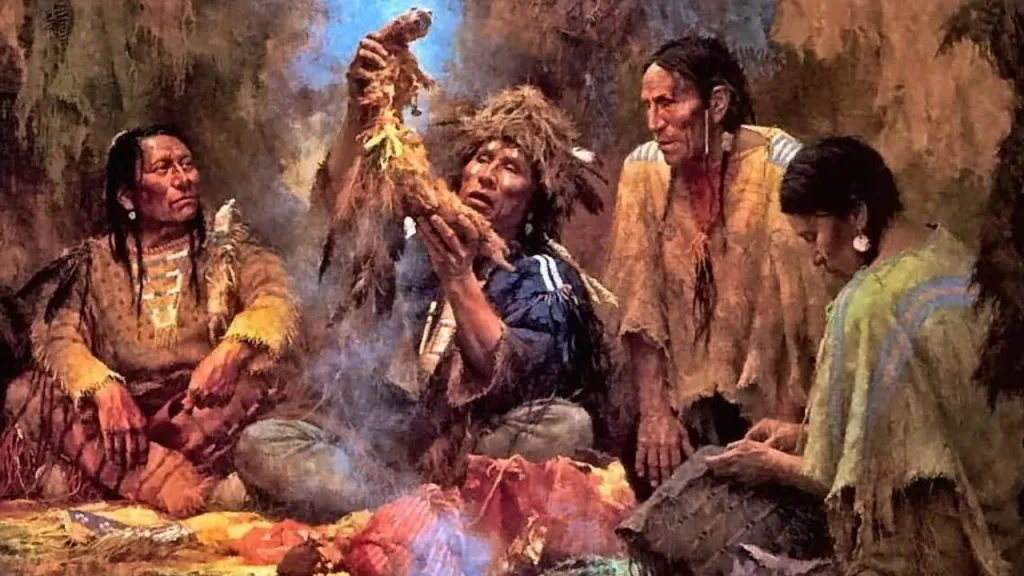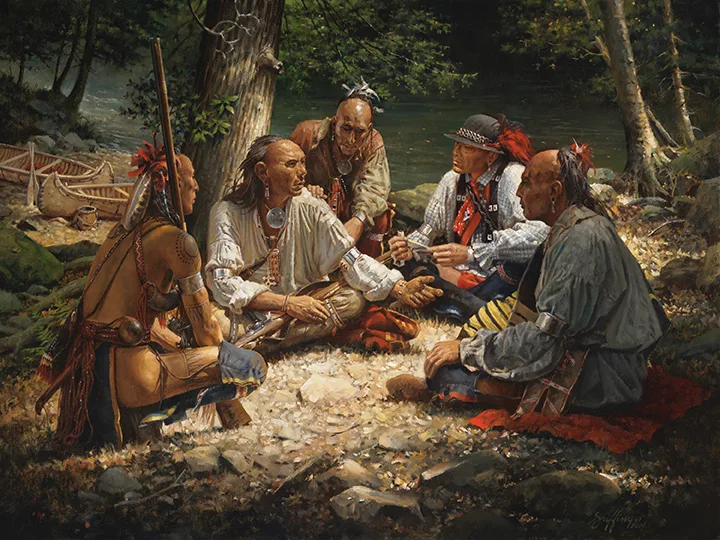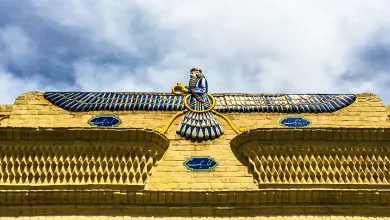Native American Religions

Like all animistic religions, Native American religions (NARs) provide a variety of beliefs and practices that make generalizations challenging. Thus it is necessary to speak in the plural of Native religions. Depending on where they have settled, the various Native American people groups, or tribes, have made their living through agriculture, pastoral tending of livestock, or hunting and gathering. Some have lived in settled towns or small cities. Others have lived nomadically, following herds of buffalo or other wild game. One consequence has been an assortment of religious expressions and rituals.
Another factor inhibiting description of these religions is that in most cases Native Americans left no written records of life before the arrival of European immigrants. Written sources, therefore, usually have been produced by outside observers of Native life, which inserts a non-Native worldview into depictions and explanations, even when the writer strives to avoid bias. Many early sources, unfortunately, did not even attempt neutrality but describe these religions in negative terms.
Finally, Native American interactions with European settlers from the seventeenth century onward resulted in extensive conversion, at least outwardly, to Christianity. By the mid-twentieth century, most Native people professed to be Christian, though many mixed traditional practices with their new faith. Since 1960, there has been a massive resurgence of interest in Native culture and religions, with a subsequent reversal of the number of Native Americans professing Christianity. However, we cannot always know whether today’s post-Christian Native practices and rituals are the same as they were before interaction with Europeans.
One applicable generalization is that NARs have a strong emphasis on the spirit world, something they share with the rest of the huge animistic category. But specific beliefs about its traits vary. Some Native tribes have worship rituals of key spirits such as Mother Earth, thunder and/or lightning, and guardian spirits; these might be considered polytheistic, since they lack one central deity.
Many other tribes, however, believe in a Great Spirit or Creator Spirit who exists above the rest of the spirit world. This spirit may be impersonal, leading to Deism (explained in chapter 10), or personal and so more monotheistic in nature. Still others see this Great Spirit as a divine force in nature and, accordingly, are more pantheistic in outlook.
Another generally valid observation is that Native peoples highly value living in balance with the natural environment. While traditionally this was a physical necessity, it also found and continues today to find validity in their respect for the spirits they believe live in the natural realm. There have been exceptions on both sides, but among the most common sources of conflict between Native American and European American cultures has been disparity in how the land and nature are treated.

As European settlement moved west across the continent, the cutting of forests, plowing of the soil, and decimation of buffalo herds and other game were viewed by Native peoples as a physical encroachment on their livelihood and an attack upon the spirits that were the providers of and even dwellers in those natural resources.
The focus of Native religions, even for believers in a Great Spirit or Creator, is not typically on that central deity (as in monotheistic religions), but rather on the surrounding spirit world that is believed to impact daily life. As with other animistic systems, maintaining good relations with the spirit realm is at the core of most beliefs and practices. Again, these religions are often described as practical, as they deal primarily with the pragmatic present.
Because the spirits are nearby and have certain demands or requirements in order to keep relationships with humans, it is possible to offend them, with negative consequences for individuals or even entire communities. Therefore, taboos are a common feature. In Western culture, this term is often used for actions prohibited on social, moral, or ethical grounds. In Native religions, taboos are behavioral requirements or prohibitions such that doing (or not doing) them would upset the balance of nature, bring negative magical power into individuals, or offend the spirits. Taboos are rigidly enforced, since failure to follow them may bring disastrous corporate consequences.
Native American religions rarely have priests or other full-time leaders. Everyone participates at some level. A few may have closer relationships with the spirit world and thus have ability or spiritual insight that benefits the community, most commonly in the form of healing. These medicine men (or women), as they were called by European observers, hold significant power but also great responsibility for the community’s well-being.
The usual purpose of the many types of rituals and ceremonies is to draw the physical and spiritual worlds closer together. A familiar goal is that humans may obtain strength, endurance, or wisdom from one or more spirits. The best-known ritual for an individual is the Vision Quest, which, in some tribes, may be done by anyone needing special spiritual assistance, though they’re most common for young men (occasionally young women) as part of entrance into adulthood.

The quest typically involves isolation from the community and fasting for several days. The aim is to receive a vision of an animal (visually representing a particular spirit) that becomes the person’s totem, believed then to guard and guide him or her throughout the rest of life.
The most common group ceremonies involve dancing and drumming, activities intended to help humans become more open to the spirit world. Dances may go on for hours or even days as the dancers disengage from the everyday world and seek communion with the spirits. Today, powwows are becoming increasingly common and nearly always include dancing. For some, this is more about recovering their culture than a religious exercise, but, again, Native peoples characteristically do not separate the sacred from the secular.
Beliefs regarding the afterlife are variable, but generally Native people do not fear dying. Most believe there is a place to which one’s spirit goes at death. For some this is a happy place; for others it contains sadness. Usually people’s spirits are considered to abide in this other plane of existence as long as they are remembered by those still living. As they are forgotten, their spirit gradually fades from existence.
An Extra Minute
NARs are seeing a resurgence of interest on the part of both Natives and non-Natives (usually those exploring New Age religions). Attendance at powwows has soared, and Natives knowledgeable about traditional practices are in great demand. While some Natives are pleased that outsiders are interested, many others are concerned that more will be lost than gained. Some Native religious teachers have been known to alter symbols and practices slightly when teaching non-Natives.

NARs Native American religions
NARs Native American religions
Morgan, G.R. (2012) Understanding World Religions in 15 Minutes a Day. Minneapolis, MN: Bethany House Publishers, pp. 46–49.



